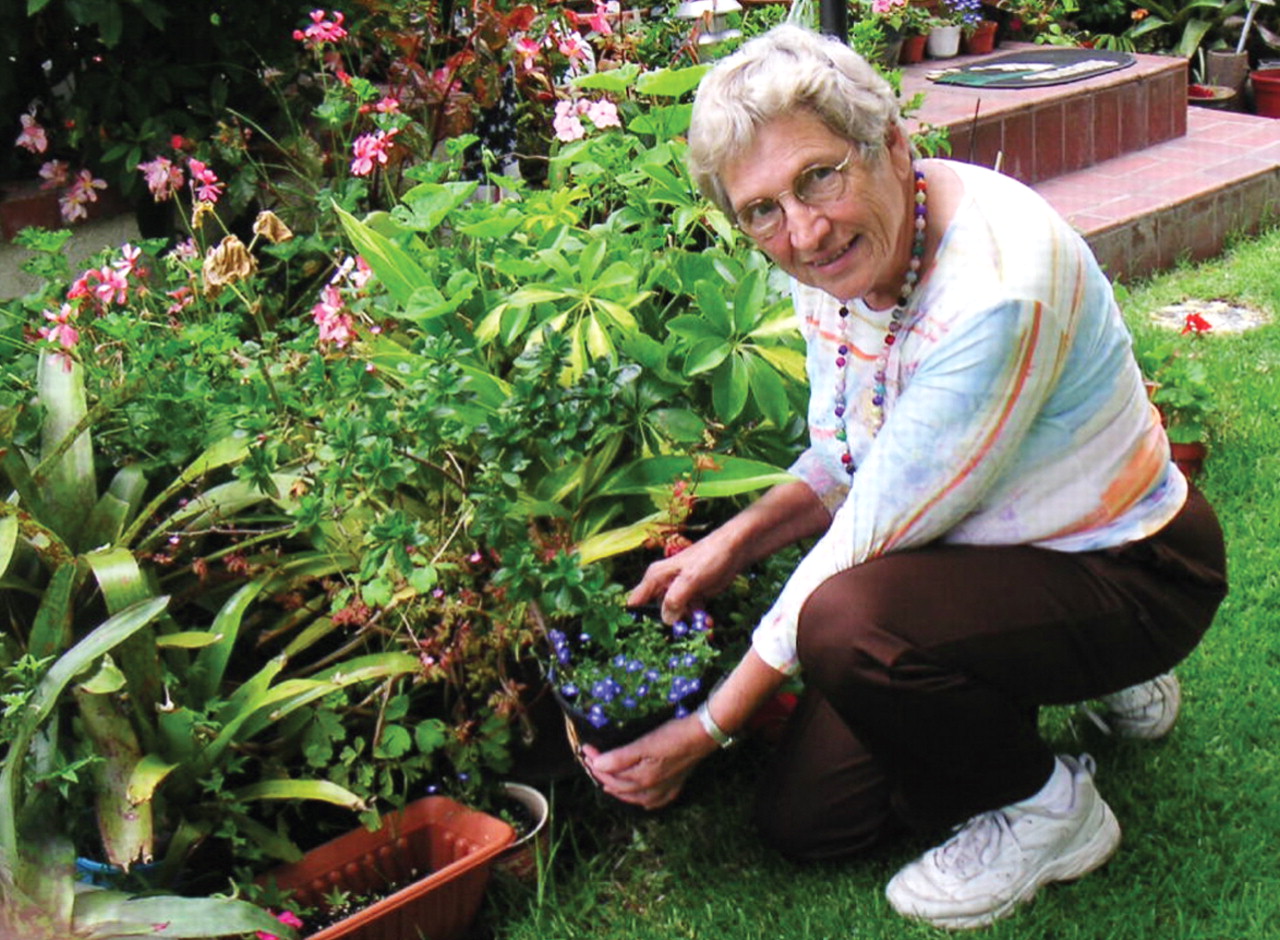Radishes are not mentioned in DSM-IV. Nevertheless, the crunchy little vegetables are part of the therapeutic toolkit that Bella Schimmel, M.D., Ph.D., carries with her to the school children she sees each week as part of her practice in Los Angeles.
Digging in a garden, watering plants, or even just looking at or tasting unfamiliar fruits and vegetables can open doors for children with psychiatric or learning disabilities and help them improve other aspects of their lives.
“Everything a youngster does in a garden—eye-hand coordination, following directions, smelling, tasting—enlarges their experience and helps them across the board,” said Schimmel in an interview. On days when she isn't working with school children, Schimmel teaches at UCLA or conducts her private practice.
Schimmel, a child psychiatrist who just attended her 55th medical-school reunion, is a part-time practitioner of horticultural therapy, a small field with a long history.
Nineteenth century mental hospitals in Britain and America were often built in rural areas, and patients were assigned to work in fields or gardens as part of their therapy. Benjamin Rush claimed that digging in the asylum garden helped patients recover. Able-bodied patients at the Milledgeville Asylum in Georgia, among other places, worked in the garden to grow food that helped defray the costs at the institution.
A brief article in 1959 in Mental Hospital (a predecessor of Psychiatric Services) reported that 40 boys committed to Pontiac State Hospital in Michigan as “delinquents and criminals” were“ digging their troubles into the soil” in a gardening program.
However, the modern history of horticultural therapy can be traced to Karl Menninger's interest in gardening, which led him to support patients' work with plants as a valuable adjunct to therapy.
“Menninger began working in greenhouses and outdoor gardens with World War II veterans who experienced physical and emotional problems,” said Teresia Hazen, M.Ed., a registered horticultural therapist and coordinator of the Legacy Therapeutic Gardens at the Legacy Health System in Portland, Ore. “He believed that it promoted work, social, and cognitive skills.”
Ken Ensroth, M.D., a psychiatrist at Legacy Health, did his residency at the Menninger Clinic in 1988 and found that greenhouses remained part of the therapeutic setting. “Even severely depressed patients who grew plants would brighten up and engage their recreational therapists,” he said.
That modest introduction at the Menninger Clinic eventually developed into a graduate program in horticulture therapy at Kansas State University, said Richard Mattson, Ph.D., a professor of horticulture and coordinator of the horticultural therapy program there. After his arrival at Kansas State in 1969, Mattson worked with the university's horticulture faculty and with Karl Menninger and others at the Menninger Clinic to develop the first horticultural therapy bachelor's degree in 1971.
“There's strong medical evidence that working with plants or exposure to nature has incredible therapeutic power,” said Mattson, who is realistic about the value of his specialty. “Horticulture doesn't cure anyone, but it opens doors and broadens horizons.”
On her trips to Los Angeles area elementary and middle schools, Schimmel may start by bringing gardening materials into classrooms.
“You always have to have a project,” she said. She shows them seeds or plant cuttings. The children examine them, then place them on water or in earth and watch them grow. She may ask them to draw plants or foods or write about them.
“Many of these kids have problems with reading, writing, and self-esteem,” she said, and the activities she directs address those problems.
Children Use All Their Senses
Some schools she visits have gardens. There, she shows children plants that are blooming or producing fruit. She'll ask the children to use all their senses to describe fruits, vegetables, or plants. What do you see? she asks them. What color is it? What is its shape? What does it smell like? How does it taste? She asks them to draw the plant or fruit, to label it, write about it, correct any errors, and rewrite their description.
Not coincidentally, she is educating them at the same time about good foods to eat.
Schimmel's students at Richland Elementary school, for instance, started by digging up the soil and pulling weeds, activities that are good physical exercise and train gross motor skills. Planting seeds tunes up the fine motor skills. Watering three times a week teaches them responsibility.
The radishes help too. They grow quickly and are ready for harvest in a month. Schimmel has the children draw the radishes, write about them, then cut them up and eat them.
Her work in the garden is just part of a larger effort to improve the lives of her charges.
“This is an adjunct,” she emphasized. “Many other teachers are working with these kids, but my training lets me talk to them individually and get them to express their feelings. You need to reach kids wherever they are and hope they'll understand you.”
Legacy Health Systems in Portland was scheduled to break ground in August for a therapeutic garden that will include dozens of varieties of trees, shrubs, ferns, grasses, and herbs, said Hazen. Simply sitting in the garden will be a restorative experience for patients, but it can also be the site of group-therapy sessions or exercise.
Hazen will teach patients about plants and horticulture.
Plants Are Not Judgmental
“I think we have a chance to nurture something, like setting and reaching goals,” she said. “A plant is not judgmental. Growing one gives a patient a possession, something to keep or to give to another person. People in treatment need more immediate reinforcement. When they get positive reinforcement from staff or other gardeners, it helps with their attention and social interaction.”
Even if shorter stays don't allow patients to follow a plant's growth from seed to fruit or flower, they can gain some satisfaction from either tending it at home or handing it off to an incoming patient, who then takes over responsibility for it, said Ensroth. “Along with other nonverbal or paraverbal therapies, tending plants increases patients' sense of trust, their openness, and their orientation to reality.”
Meantime, back in Los Angeles, the school year will begin again soon, and Schimmel will start making the rounds with her proven therapeutic tools—trowels, watering can, potting soil, and radish seeds.
Information from the American Horticulture Therapy Association is posted at<www.ahta.org>.▪

